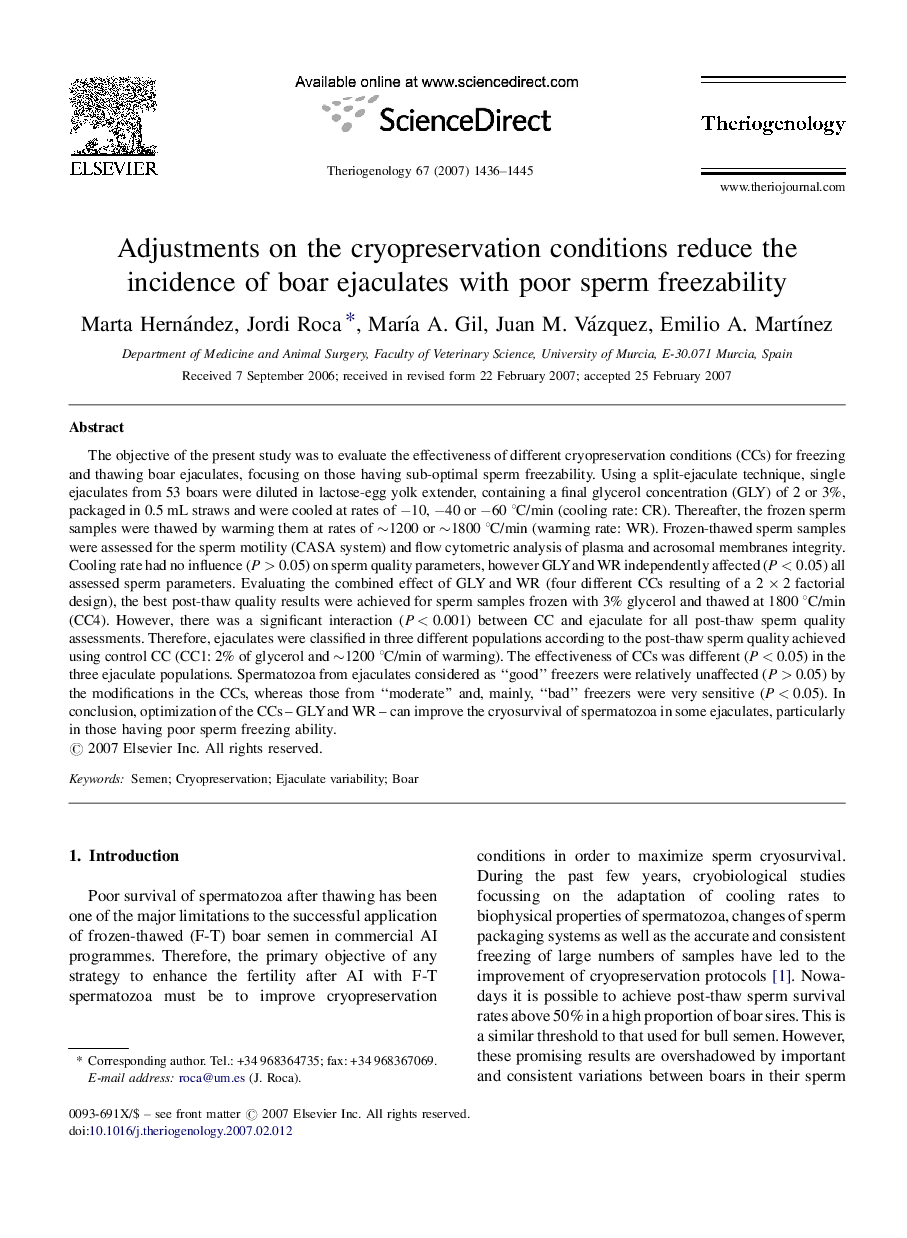| Article ID | Journal | Published Year | Pages | File Type |
|---|---|---|---|---|
| 2096594 | Theriogenology | 2007 | 10 Pages |
The objective of the present study was to evaluate the effectiveness of different cryopreservation conditions (CCs) for freezing and thawing boar ejaculates, focusing on those having sub-optimal sperm freezability. Using a split-ejaculate technique, single ejaculates from 53 boars were diluted in lactose-egg yolk extender, containing a final glycerol concentration (GLY) of 2 or 3%, packaged in 0.5 mL straws and were cooled at rates of −10, −40 or −60 °C/min (cooling rate: CR). Thereafter, the frozen sperm samples were thawed by warming them at rates of ∼1200 or ∼1800 °C/min (warming rate: WR). Frozen-thawed sperm samples were assessed for the sperm motility (CASA system) and flow cytometric analysis of plasma and acrosomal membranes integrity. Cooling rate had no influence (P > 0.05) on sperm quality parameters, however GLY and WR independently affected (P < 0.05) all assessed sperm parameters. Evaluating the combined effect of GLY and WR (four different CCs resulting of a 2 × 2 factorial design), the best post-thaw quality results were achieved for sperm samples frozen with 3% glycerol and thawed at 1800 °C/min (CC4). However, there was a significant interaction (P < 0.001) between CC and ejaculate for all post-thaw sperm quality assessments. Therefore, ejaculates were classified in three different populations according to the post-thaw sperm quality achieved using control CC (CC1: 2% of glycerol and ∼1200 °C/min of warming). The effectiveness of CCs was different (P < 0.05) in the three ejaculate populations. Spermatozoa from ejaculates considered as “good” freezers were relatively unaffected (P > 0.05) by the modifications in the CCs, whereas those from “moderate” and, mainly, “bad” freezers were very sensitive (P < 0.05). In conclusion, optimization of the CCs – GLY and WR – can improve the cryosurvival of spermatozoa in some ejaculates, particularly in those having poor sperm freezing ability.
